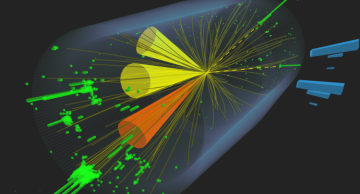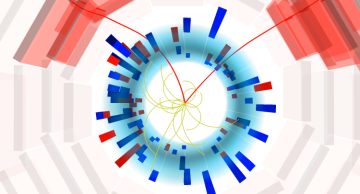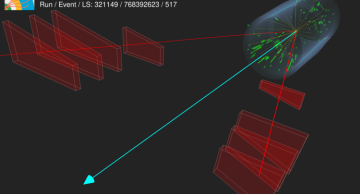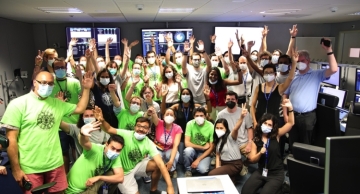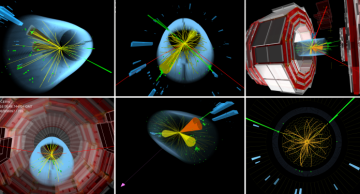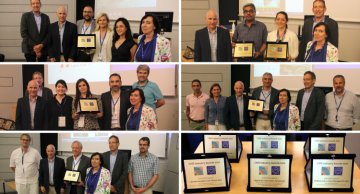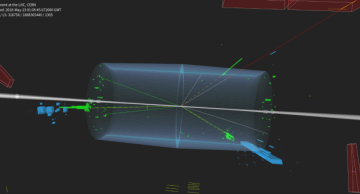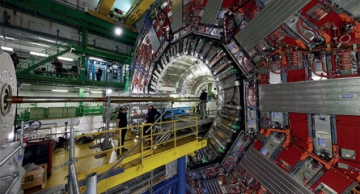Have you heard of vector-like quarks? They are hypothetical particles which would provide an explanation to the value of the Higgs boson mass, which is still a mystery. Vector-like quarks are predicted by a variety of theories beyond the Standard…
News
|
ajafari |
Physics
Rare events, such as a total solar eclipse or a supernova explosion, are fascinating and stimulate our imagination. In addition, such events may lead to discoveries expanding our knowledge horizon. At the Large Hadron Collider (LHC), studies of…
|
ajafari |
Physics
CMS has developed a new method to measure the properties of the top quark with high precision. It relies on an innovative way to cluster particles into jets.
The top quark is the most massive elementary particle we have discovered so far. Due…
|
ajafari |
Physics
The processes that are mostly studied at the LHC are caused by energetic collisions where the protons break up into their constituents, the quarks and gluons, which recombine to form composite hadrons. However, many proton-proton interactions result…
|
ikhalid |
Collaboration
The long-awaited LHC Run 3 has started!
Yesterday, 5th of July 2022, the Large Hadron Collider (LHC) at CERN delivered proton-proton collisions at the energy of 13.6 trillion electron volts (TeV) for the first time, setting a new world record. The…
|
ajafari |
Physics
Exactly ten years ago, on the 4th of July 2012, the ATLAS and CMS experiments announced the discovery of a new particle compatible with the long-sought Higgs boson.
This discovery takes us back to the events occurring in our early…
|
ikhalid |
Collaboration
Building the huge and complex CMS detector was a big engineering challenge but the contribution of industrial companies all across the globe made it possible. Their contributions are not only limited to the construction phase of the detector but are…
|
ikhalid |
Collaboration
As every year, we are happy to congratulate the CMS award winners!
CMS Collaboration is proud to successfully advance knowledge, scientific research and technology for years but, no doubt, all this would not have been possible without the…
|
ikhalid |
Collaboration
The CMS Collaboration recognizes the efforts and outstanding achievements of the young members of the CMS honoring them with the CMS Young Researcher Prize. This endorsement of their skills and dedication not only paves their future career path but…
|
ikhalid |
Collaboration
Each year, the CMS collaboration recognizes exceptional Ph.D. student work with the Thesis Award. The theses distinguished by the award may also provide inspiration and motivation for the new generations of students.
All Ph.D. students who conducted…
|
ajafari |
Physics
The LHC can be viewed not only as a hadron collider, but also as a boson collider. With the highest energies and collision rates ever, the LHC is pushing the limits of our understanding of rare processes such as W-photon scattering. The W bosons and…
|
ajafari |
Detector
The CMS detector, illustrated in Fig. 1, is centred around the largest and highest granularity silicon tracker ever built, including around twenty thousand detector units structured in thin cylindrical layers that extend over nearly 6 metres along…

